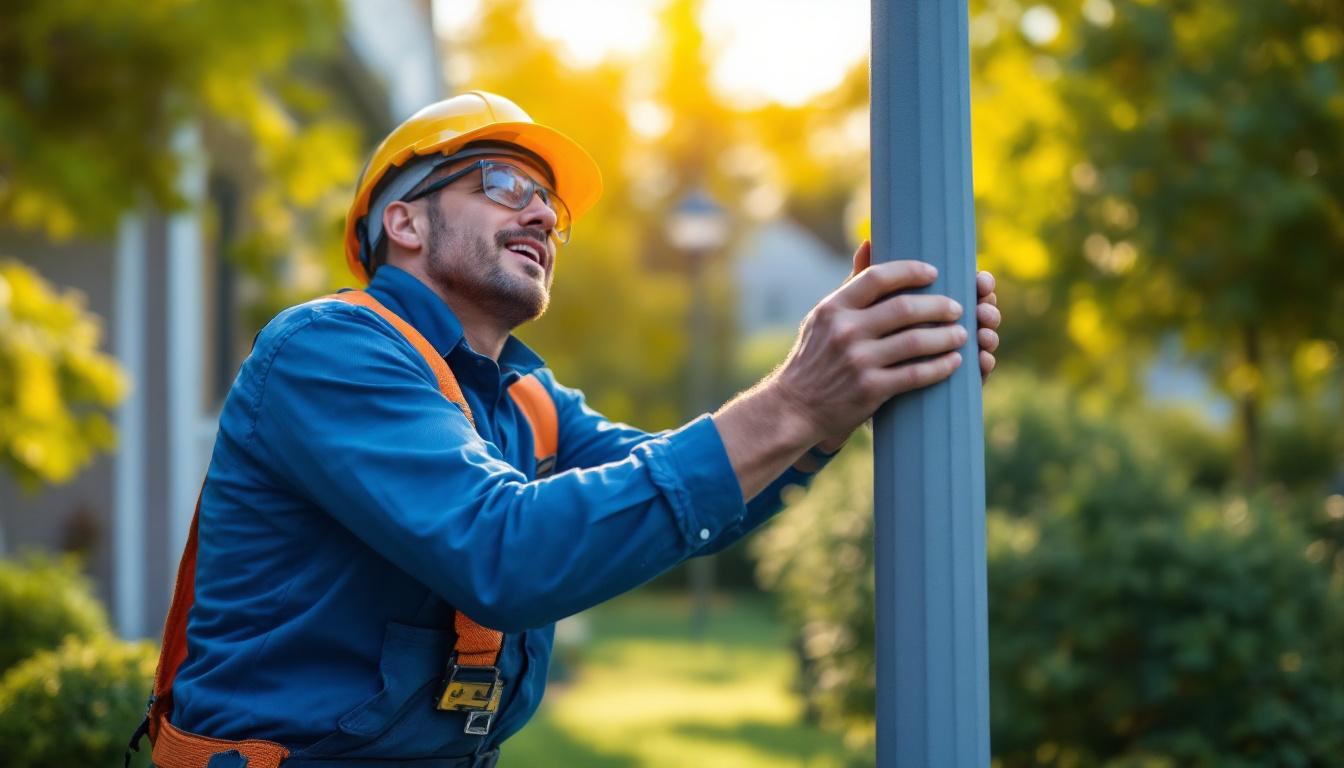
In the realm of outdoor lighting, compliance is not merely a regulatory hurdle; it is a critical component that ensures safety, functionality, and aesthetic appeal. Lighting contractors must navigate a complex landscape of codes, standards, and regulations that govern outdoor lighting installations. Understanding these compliance requirements is essential for delivering projects that meet both client expectations and legal obligations.
The compliance landscape varies significantly across regions, influenced by local building codes, zoning regulations, and environmental considerations. Contractors must familiarize themselves with these stipulations to avoid potential liabilities and ensure that their work adheres to the highest standards of safety and quality.
Several key regulations impact outdoor lighting installations. The National Electrical Code (NEC) is a primary standard that governs electrical safety in the United States. It outlines the requirements for wiring, grounding, and installation practices that contractors must follow. Additionally, local codes may impose stricter requirements, particularly in areas with unique environmental or safety concerns.
Another important consideration is the Americans with Disabilities Act (ADA), which mandates that outdoor lighting installations must be accessible and safe for individuals with disabilities. This includes ensuring that pathways, entrances, and other critical areas are adequately illuminated.
Environmental regulations also play a significant role in outdoor lighting compliance. Many regions have adopted lighting ordinances aimed at reducing light pollution and protecting wildlife habitats. Contractors must be aware of these regulations to ensure that their installations do not contribute to excessive glare or disrupt local ecosystems.
Moreover, energy efficiency standards, such as those set by the Department of Energy (DOE), encourage the use of energy-efficient lighting solutions. Contractors should stay informed about these standards to recommend and install products that not only comply with regulations but also promote sustainability.
In addition to these regulations, contractors should also consider the impact of their lighting designs on local wildlife. For instance, certain species, such as sea turtles and migratory birds, can be adversely affected by artificial lighting. By implementing strategies like using shielded fixtures and selecting appropriate color temperatures, contractors can mitigate these effects while still achieving the desired illumination levels. Understanding the ecological ramifications of lighting choices is not only a compliance issue but also a responsibility that reflects a commitment to environmental stewardship.
Furthermore, advancements in smart lighting technology are reshaping compliance requirements. As cities adopt smart lighting systems that can be controlled remotely and adjusted based on real-time conditions, contractors must ensure that these systems comply with existing regulations while also integrating seamlessly into the urban landscape. This includes addressing cybersecurity concerns and ensuring that data privacy is maintained, as smart systems often collect and transmit information about usage patterns. Staying abreast of these evolving technologies and their regulatory implications is vital for contractors aiming to remain competitive and compliant in the ever-changing field of outdoor lighting.
The selection of outdoor posts for lighting is a critical decision that impacts both functionality and compliance. Various factors must be considered, including material, height, design, and compatibility with lighting fixtures. Each of these elements plays a role in ensuring that the installation meets regulatory standards while also fulfilling the client’s aesthetic and practical needs.
Outdoor posts are available in a range of materials, including aluminum, steel, and fiberglass. Each material has its advantages and disadvantages. For instance, aluminum is lightweight and resistant to corrosion, making it a popular choice for coastal areas. On the other hand, steel offers durability and strength, which may be necessary in high-traffic locations.
Contractors should also consider the environmental impact of the materials they choose. Sustainable materials that minimize environmental harm can enhance a project’s compliance with local regulations and appeal to environmentally conscious clients. Moreover, the choice of materials can affect the longevity of the lighting installation. Posts made from recycled materials not only contribute to sustainability but also often come with warranties that reflect their durability, providing peace of mind for both contractors and clients alike.
The height of outdoor posts is another crucial factor. Local regulations often dictate specific height requirements for outdoor lighting to ensure adequate illumination without causing glare or light pollution. It is essential for contractors to consult local codes to determine the appropriate height for their installations.
Design specifications can also vary based on the intended use of the lighting. For example, decorative posts may be more suitable for residential areas, while robust, industrial designs may be necessary for commercial or municipal applications. Selecting the right design ensures that the lighting not only complies with regulations but also enhances the overall aesthetic of the space. Additionally, the design should consider the surrounding landscape and architecture, creating a cohesive look that integrates seamlessly with the environment. Thoughtful design can elevate a simple lighting installation into a statement piece that adds character and charm to outdoor spaces, inviting people to enjoy the area even after sunset.
Compliance extends beyond the selection of materials and fixtures; it also encompasses the installation process itself. Proper installation practices are vital for ensuring that outdoor lighting systems function safely and effectively. Contractors must adhere to best practices throughout the installation process to avoid compliance issues.
A thorough site assessment is the foundation of any successful outdoor lighting installation. Contractors should evaluate the site for potential obstacles, such as trees, buildings, and existing infrastructure, that could impact the placement of lighting posts. Additionally, understanding the local environment can help identify potential challenges related to weather, soil conditions, and wildlife.
Preparation also involves ensuring that all necessary permits are obtained before beginning the installation. This step is crucial for compliance, as failure to secure the appropriate permits can lead to costly delays and potential legal issues.
Electrical safety is paramount in outdoor lighting installations. Contractors must ensure that all wiring is properly rated for outdoor use and that connections are secure and weatherproof. Grounding practices must also be followed to prevent electrical hazards. Compliance with the NEC is essential, and contractors should regularly consult the code to stay updated on any changes.
In addition to safety, energy efficiency should be a priority. Using LED fixtures and smart lighting controls can significantly reduce energy consumption while still providing adequate illumination. These choices not only enhance compliance with energy regulations but also appeal to clients seeking sustainable solutions.
Compliance does not end with installation; ongoing maintenance is equally important. Regular inspections and maintenance of outdoor lighting systems are essential for ensuring that they continue to operate safely and effectively. Contractors should educate clients on the importance of maintenance to prevent compliance issues down the line.
Conducting regular inspections allows contractors to identify potential issues before they escalate into significant problems. This includes checking for signs of wear and tear, such as rust or damage to fixtures and posts. Additionally, ensuring that all electrical connections remain secure and that the lighting is functioning as intended is critical for compliance.
Documentation of these inspections can also be beneficial. Keeping records of maintenance activities can provide evidence of compliance if questions arise regarding the safety or functionality of the lighting system.
Educating clients about the importance of maintenance and compliance can foster a positive relationship and encourage them to invest in the upkeep of their outdoor lighting systems. Providing clients with guidelines on how to care for their installations, including cleaning schedules and troubleshooting tips, can empower them to take an active role in maintaining compliance.
The lighting industry is continually evolving, with new technologies emerging that can enhance compliance and improve overall performance. Lighting contractors must stay informed about these advancements to remain competitive and ensure that their installations meet the latest standards.
Smart lighting technologies offer numerous benefits, including improved energy efficiency and enhanced control over lighting systems. These solutions allow for remote management, enabling contractors to adjust lighting levels and schedules based on specific needs. Additionally, smart lighting can help reduce light pollution by allowing for more precise control of illumination.
As municipalities and organizations increasingly adopt smart city initiatives, contractors who are knowledgeable about these technologies will be better positioned to meet compliance requirements and client expectations.
LED technology continues to advance, offering improved efficiency, longer lifespans, and better color rendering. As energy efficiency regulations become stricter, contractors should prioritize LED solutions that not only comply with these standards but also provide superior performance.
Furthermore, the use of LED fixtures can reduce maintenance costs over time, as they require less frequent replacement compared to traditional lighting options. This aspect can be a significant selling point for clients looking to invest in sustainable and cost-effective solutions.
For lighting contractors, understanding compliance in outdoor lighting installations is a multifaceted challenge that requires knowledge of regulations, best practices, and emerging technologies. By prioritizing compliance at every stage—from planning and selection to installation and maintenance—contractors can deliver high-quality projects that meet client needs while adhering to legal obligations.
As the industry continues to evolve, staying informed about changes in regulations and advancements in technology will be crucial for success. By embracing these challenges and opportunities, lighting contractors can position themselves as trusted experts in outdoor lighting compliance, ultimately leading to more successful projects and satisfied clients.
Ready to elevate your lighting installations with compliance and quality at the forefront? Look no further than LumenWholesale for all your lighting needs. Our extensive selection of spec-grade lighting products ensures that you can meet the highest industry standards while enjoying unbeatable wholesale prices. Say goodbye to inflated markups and hello to hassle-free bulk buying with free shipping. Don’t compromise on quality or value; choose LumenWholesale for reliable, high-performance lighting solutions that blend affordability with convenience. Start your journey to successful, compliant outdoor lighting projects by visiting Wholesale Lighting at the Best Value today.

Discover the essential insights lighting contractors need to meet client expectations in the evolving world of strip and LED lights.

Discover the essential guide for lighting contractors on selecting the perfect lighting solutions for recording studios.

Discover innovative hacks for smart lighting contractors to enhance walkways with solar lights.

Discover why LED flood lights are revolutionizing the lighting industry and what every contractor needs to know.